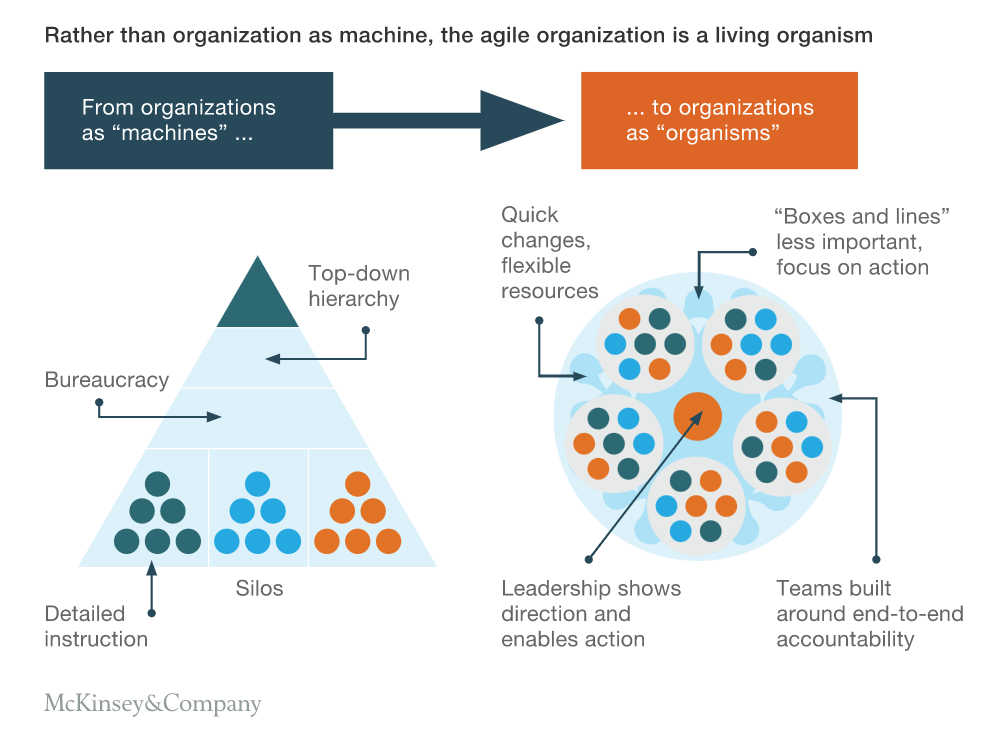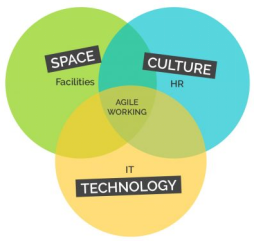“Agility” has been a buzzword in business and industry for many years now. Agile principles in project management and the way businesses function have grown increasingly popular. In a 2022 article in Industry Today, Steve Basili, EY’s Global Operating Model Transformation Leader, contended that agile operations are more vital than ever before.

COVID-19 was pivotal in this transformation: The companies that responded best to the pandemic were those with the flexibility and lean attributes of being agile. In its aftermath, many businesses realized that their best chance of weathering a post-pandemic world of uncertainty would be by embracing agile principles.
The facilities management function is at the forefront of this paradigm change in how businesses operate. This article will outline a holistic approach to facilities management, one which takes agility to the next level in your organization.
Organizational Agility & Facilities Management
According to McKinsey & Co., an agile organization is ideally comprised of “a dense network of empowered teams that operate with high standards of alignment, accountability, expertise, transparency, and collaboration.” McKinsey & Co. also iterates how an organization must also possess a “stable ecosystem” that ensures that agile teams are able to work effectively.
Gone are the days when business processes were seen in linear terms, akin to a “machine.” Modern businesses based on agile principles are seen as non-linear “organisms,” in which the emphasis is on processes that are organic and holistic. The paradigm change from the old to the new can be seen in the McKinsey & Co. model below:

There are many advantages to being an agile organization, including:
- Quicker decision-making at all levels of the organization
- Quicker responsiveness to needed change
- Greater cross-functional collaborations
- A more free, unobstructed flow of information
- Improved resilience to sudden changes or even “black swan” events.
The facilities management function can be bolstered by organizational agility. How so? Greater collaboration across all departments means that facilities departments can more quickly be aware of issues arising with, say, machinery not working optimally or problematic building infrastructure. Facilities management can also more effectively work alongside HR, IT, and individual departments in order to create workplaces that are better designed to foster inspiration, innovation, and employee wellness.
Getting the Fundamentals Right
The importance of deciding on a maintenance strategy that can nurture agile systems cannot be underestimated. That responsibility lies squarely with facilities management. Ensuring that all assets are optimized in terms of their usage and maximum lifespan is critical to ensuring uninterrupted production/productivity. The chosen maintenance strategy and subsequent planning should be based on five pillars: cost, efficiency, flexibility, quality, and reliability.
There are multiple different maintenance strategies that can be chosen, of which the leading five are shown in the diagram below, courtesy of Limble:

But which of these leading maintenance strategies are best suited to an agile regime? Being the most proactive of all, it makes sense that it is the predictive and prescriptive maintenance strategies that should work best for agility. A predictive maintenance strategy (PdM) uses condition-related data, maintenance logs, and other data to build algorithms that can accurately predict potential asset failures.
Prescriptive maintenance strategy (RxM) is even more advanced, relying heavily on machine learning and artificial intelligence (AI) to build prescriptive algorithms unique to a given asset that offer potential solutions for issues identified.
Both are ideal for critical, sensitive, or expensive assets. Not all businesses require the relatively higher cost and complexity of predictive or prescriptive maintenance, but they are certainly the most agile.
Fostering Agile Facilities Work
The importance of an agile-focused, cross-functional work environment for facilities is crucial. As stated above, cross-functionality between different departments can greatly bolster organizational agility. “Silos” are the antithesis of an agile organization since they do not foster collaboration and they make processes rigid and unyielding—the last thing you want when change or improvements are needed. Integral to this agility is open communication between all levels and sections of an organization.
There are interesting examples of agile work or systems in facilities management. What makes this paradigm change even more interesting is when one considers how conservative and unyielding facilities management used to be. Traditionally, it was a function based on strict hierarchies and ironclad procedures. In many ways, facilities management was similar to the HR function. The former was about managing physical infrastructure, the latter about managing people. Both tended to be rules-driven, stagnant, and even archaic.
That has all changed. Today, the FM and HR functions, along with IT, need to be blended, courtesy of a new era that is employee-centered and all about optimizing workspaces for human functionality and more merely productivity. This cross-functional intersection is simply illustrated below:

With this, factors such as intelligent space usage have become a dynamic means by which more agile workplaces can be attained. This trend alone has completely revolutionized facilities function into one of the most dynamic and innovative in any organization.
Facilities Management at the Forefront of Agility
The truth is that facilities management should be at the forefront of any organizational agility efforts, due to the widespread, multi-disciplinary reach of the FM function. Agile workplace principles may have been gaining momentum in recent years, but it was the COVID-19 pandemic that “supercharged” this trend.
Ray Stata, an American entrepreneur and engineer, once said: “I came to the conclusion long ago that limits to innovation have less to do with technology or creativity than organizational agility. Inspired individuals can only do so much.”
Wise words indeed, particularly in the context of a post-pandemic business world in which flexibility and readiness for change need to be firmly embedded in any organization.
Facilities managers should be excited that they are at the leading edge of this ongoing revolution in how businesses operate. Taking agility to the next level will not be easy for most organizations, but those that are able to do so should reap the benefits of facilities management that is smarter, leaner, and more cost-effective.
Bryan Christiansen is the founder and CEO of Limble CMMS. Limble is a modern, easy-to-use mobile CMMS software that takes the stress and chaos out of maintenance by helping managers organize, automate, and streamline their maintenance operations.
